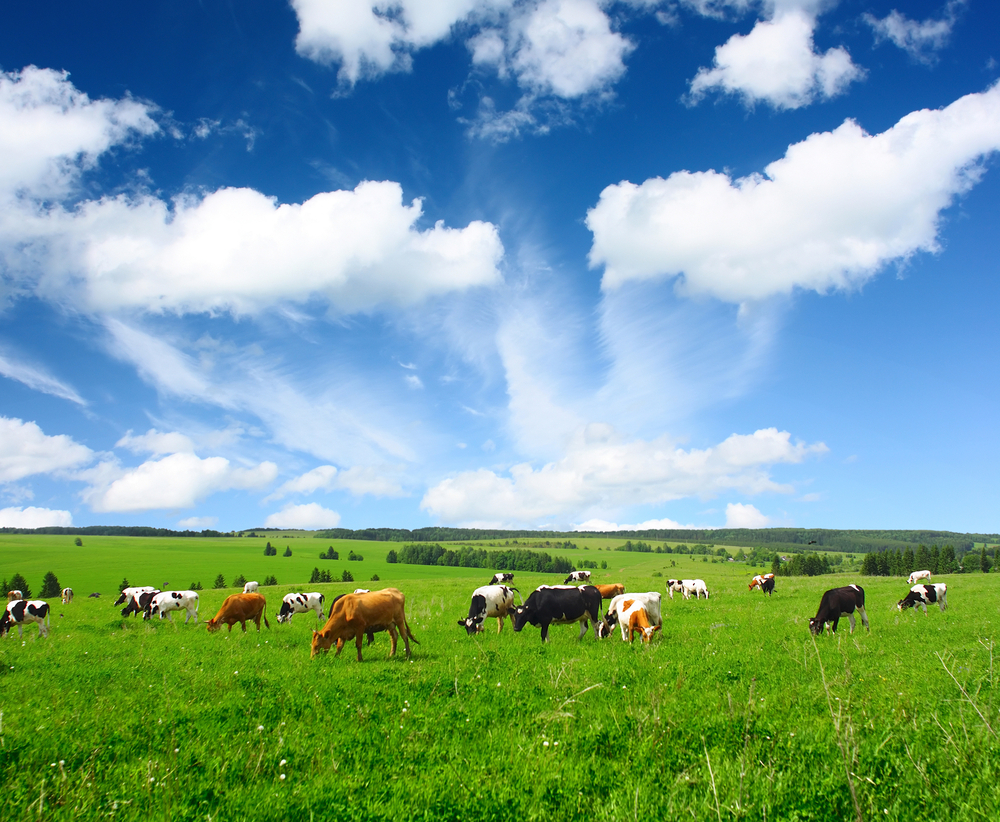Healthier Fatty Acids Found in Organic Milk

Organic milk contains a healthier balance of omega-6 and omega-3 fatty acids compared with milk from cows raised on conventionally managed dairy farms, according to a new study.
The healthier fatty acid profile of organic milk is likely a result of cows foraging on grass, the researchers said.
The scientists took 400 samples of organic and conventional milk from multiple regions in the United States over an 18-month period, and looked for the levels of various fatty acids in the milk. In particular, they looked for the balance between omega-6 and omega-3 contents , essential fatty acids that the human body cannot make from other raw materials and needs to obtain from diet.
The lab results showed that organic milk had an average ratio of omega-6 fatty acid to omega-3 fatty acid of 2.3, whereas conventional milk had an average ratio of 5.8, according to the study published today (Dec. 9) in the journal PLOS ONE. The study was partly funded by two organic farmers' cooperative organizations, which were not involved in the design of the study.
A high ratio of omega-6 fatty acids to omega-3 fatty acids in people's diets has been linked to a higher risk of health problems, such as heart disease . Studies have suggested that the healthiest ratio of omega-6 to omega-3 in the diet is about 2.3.
The results are in line with previous research showing that eating grass and legumes promotes cow health as well as improves the fatty acid profile of organic dairy products, said study author Charles Benbrook, of the Center for Sustaining Agriculture and Natural Resources at Washington State University.
"The impact of fresh grass on the fatty acid profile of the milk is a well-accepted phenomenon. It is rooted in the physiology and metabolism of dairy cows," Benbrook said.
Sign up for the Live Science daily newsletter now
Get the world’s most fascinating discoveries delivered straight to your inbox.
"A conventional farm that provides their cows with access to grass would reap the same benefit in terms of the quality of the milk," Benbrook added. [6 Foods That Are Good for Your Brain]
Organic farmers are required to follow standards set by the United States Department of Agriculture. These rules include providing access to the outdoors, including to pasture for ruminants.
Marion Nestle, a professor of nutrition and public health at New York University, said the results came as no surprise.
"One aspect of organic production methods is that cows must be allowed to graze on grass. The omega ratios reflect grass feeding. The study is further evidence that the organic rules are doing what they are supposed to be doing," said Nestle, who wasn't involved in the new study.
The researchers also found seasonal differences in organic milk's fatty acid composition. Organic milk produced in spring and summer had higher levels of conjugated linoleic acid (CLA), an important group of fatty acids.
"CLA levels go up sharply beginning in May and tail off as the summer progresses, reaching [a] lower baseline level for the winter," Benbrook said, adding that CLA levels mirror the amount of fresh forage in the cows' diet.
The team also compared the fatty acids in dairy products to those in fish, and found that recommended intakes of full-fat milk products supply more of the major omega-3 fatty acid, ALA, than do recommended servings of fish.
Email Bahar Gholipour. Follow us @livescience, Facebook & Google+. Original article on Live Science.










